Blancpain celebrates the 70th anniversary of the first modern diving watch in 2023.
Fernando AldeaThe next 12 months will be packed with exclusive experiences and watches, centered around three key numbers: 70, 20, and 10. The 70 refers to the 70th anniversary of the Fifty Fathoms; the 20 commemorates the 20th anniversary of the contemporary Fifty Fathoms and the Blancpain Ocean Commitment; and finally, the 10 in homage to the 10th anniversary of the Gombessa expeditions.
https://vimeo.com/775065516"Passion makes us lose track of time," acknowledges Jean-Jacques Fiechter, CEO of Blancpain from 1950 to 1980. With this idea in mind, he set out to create a watch that, while being robust, reliable, water-resistant, and legible enough to become his inseparable underwater companion. The fruit of his creative quest was the world's first modern diving watch, which would go on to define the characteristics of subsequent diving watches. Literature, Jean-Jacques Fiechter's other great passion, and specifically Ariel's song from William Shakespeare's The Tempest , served as inspiration for the name of the new watch that was about to leave the Blancpain workshops.
FULL FATHOM FIVE THY FATHER LIES; | Five fathoms away lies thy father; OF HIS BONES ARE CORAL MADE; | Of his bones are corals made; Those are pearls that were his eyes: NOTHING OF HIM THAT DOTH FADE, | Nothing of him fades, BUT DOTH SUFFER A SEA-CHANGE | But it transforms INTO SOMETHING RICH AND STRANGE. | Into something rich and strange. SEA-NYMPHS HOURLY RING HIS KNEE: DING-DONG. | The sea nymphs ring each hour: Ding-Dong. HARK! NOW I HEAR THEM—DING-DONG, BELL. | Listen! Now I hear them: Ding-Dong, bell.
William Shakespeare
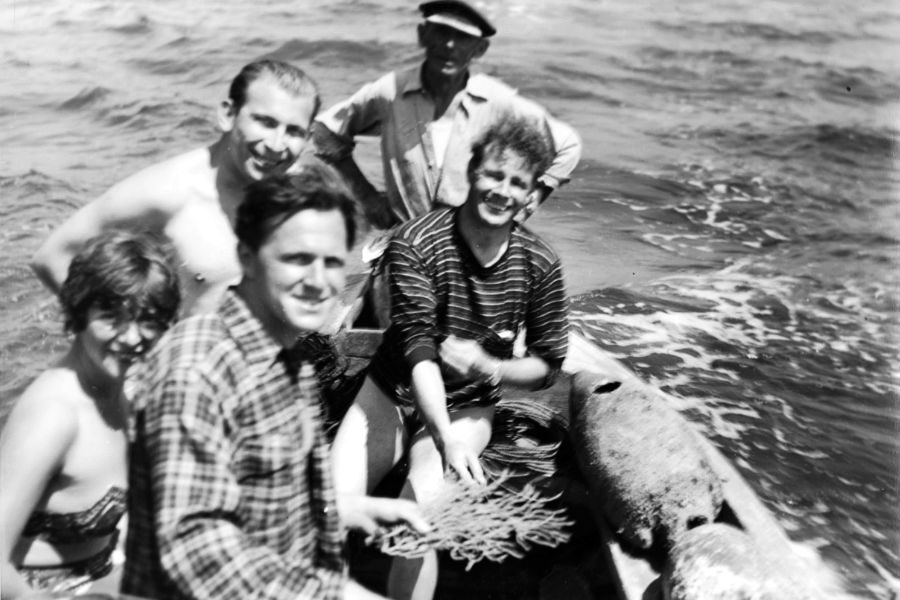

In the early 1950s, two French naval officers, Captain Robert "Bob" Maloubier and Lieutenant Claude Riffaud, were tasked with creating the French Navy's combat submariner corps. It was essential that their divers have a watch. They tested several watches for sale in Paris, but the results were disastrous: they were too small, difficult to read underwater, and, worse still, water leaked in. A lot. After meeting with Jean-Jacques Fiechter in Switzerland, the French officers took some sample Fifty Fathoms watches with them for testing. Since the watch passed the tests with flying colors, the French Navy decided to adopt the Fifty Fathoms as its diving watch. A year after the first official delivery, Claude Riffaud wrote a letter to Spirotechnique, the French distributor of Blancpain's Fifty Fathoms, to report that the combat divers were very satisfied.
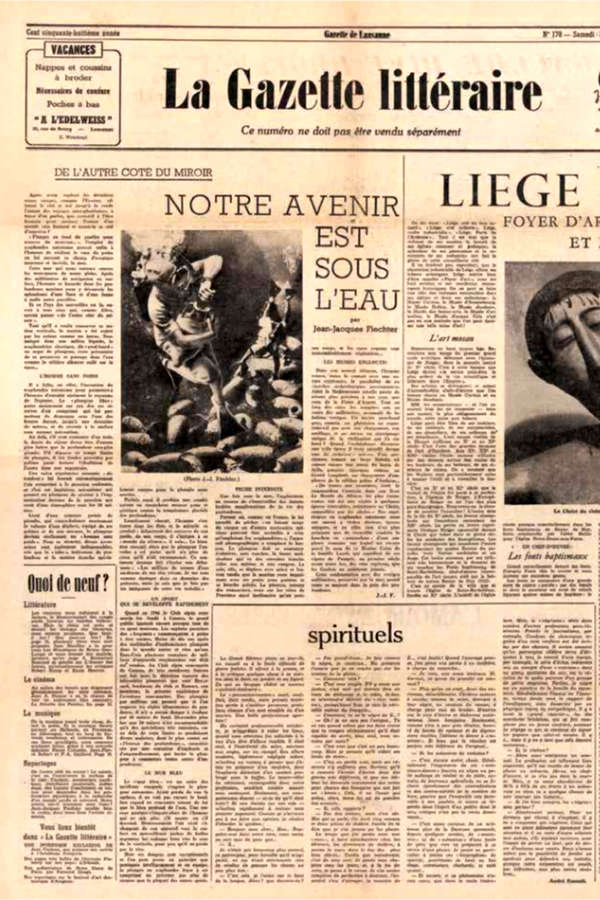
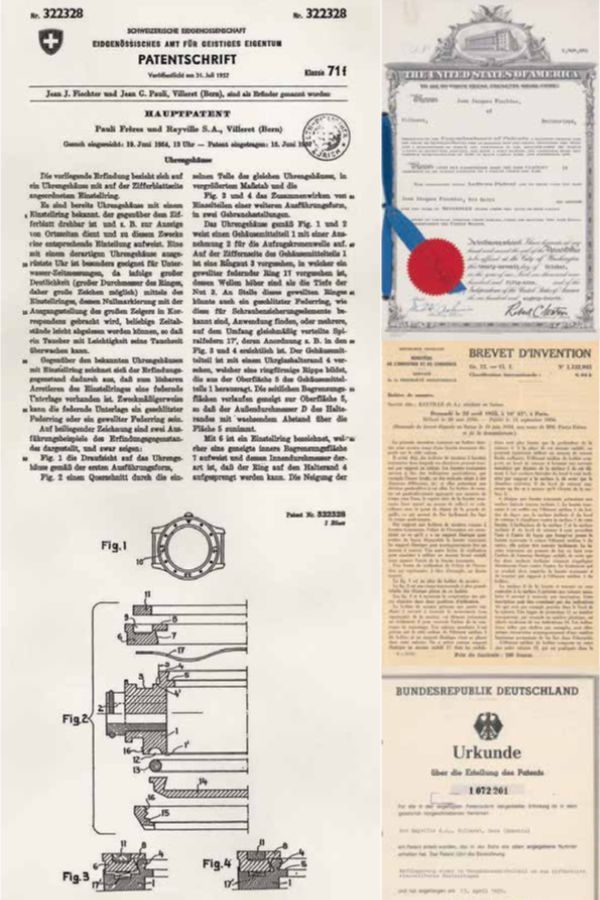
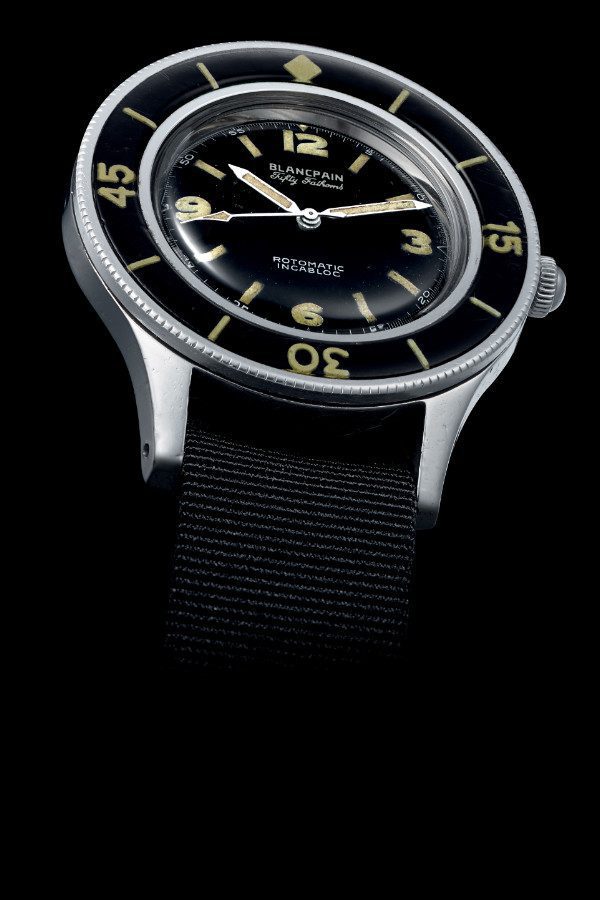
"The Future Is Underwater" , an article published by Jean-Jacques Fiechter in the Gazette Littéraire (July 30-31, 1955). Its message: "After having traveled around the world, visited the last virgin places, climbed Everest, flown from here to there... the time has come to explore the ocean. A wonderland that is right here, within reach of anyone who, like Alice, has figured out how to pass through the looking glass."
Jean-Jacques Fiechter's passion for diving led him to create a watch suitable for this sport, drawing on his own personal experience as a diver to define the essential requirements of the instrument. According to him, since patent applications were filed once the product was marketed at the time, he registered his first application in early 1954. Three distinctive innovations were patented in several countries: the locking rotating bezel, the double case back, and the double O-ring crown system.
Featuring exceptional water resistance, a robust double-sealed crown, a self-winding movement, a dark dial contrasting with luminescent markers, a locking rotating bezel, and an anti-magnetic protection system, the Fifty Fathoms became an indispensable instrument for divers during their underwater missions.
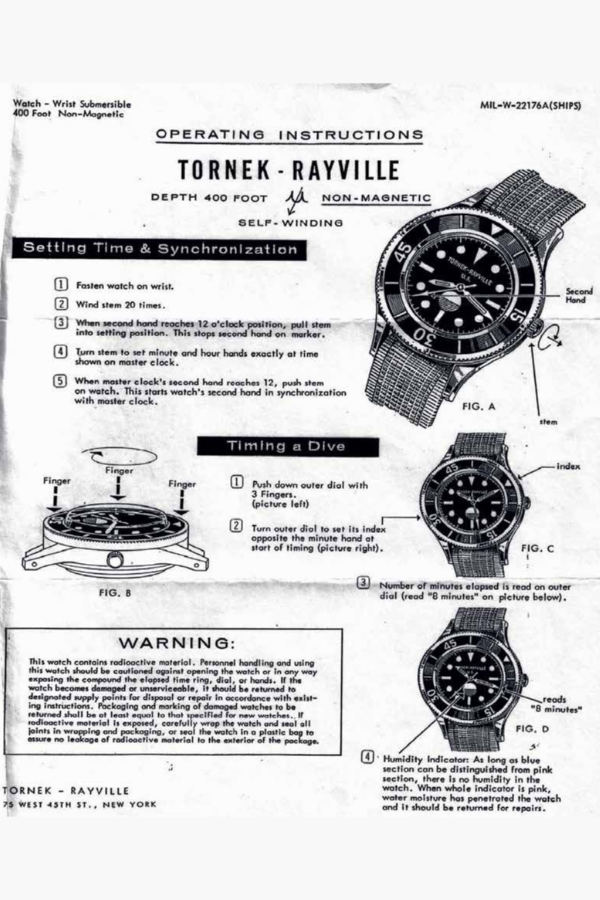
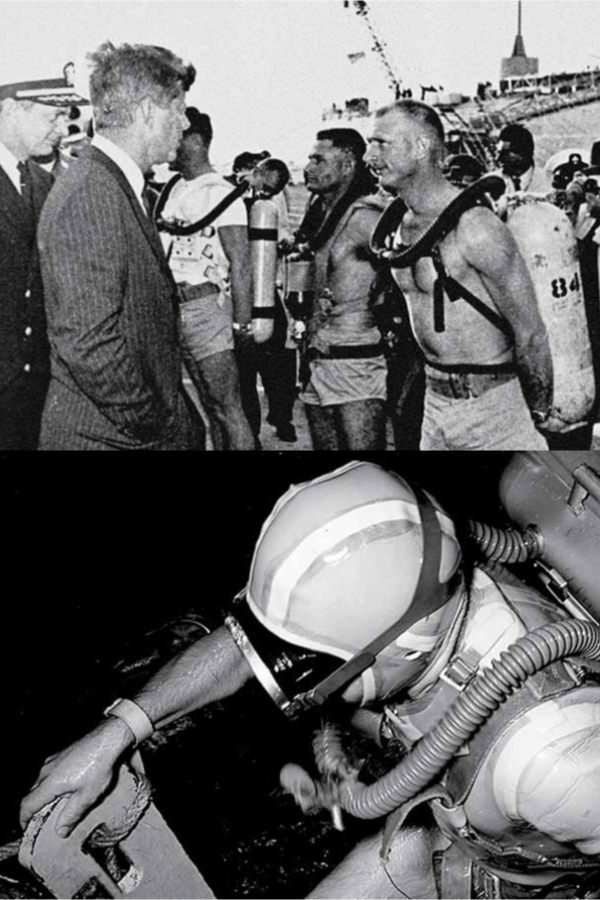
Allen Tornek, a jeweler based on 45th Street in New York, saw an opportunity to supply the US Navy with Fifty Fathoms watches. However, as a non-American company, Blancpain could not act as a direct supplier. However, Tornek could. To meet the requirements, and since the watches had to be tested and certified on American soil, he had to set up a small testing laboratory in the US. Eventually, Tornek and Blancpain won the contract, and thus was born the famous Milspec 1 Fifty Fathoms , adopted as a diving watch by the US Navy.
The genius of the Fifty Fathoms soon garnered widespread recognition, so much so that it was worn by the Navy SEALs (the U.S. Navy's elite diving corps), as well as the German and Israeli navies. However, the watch also had more peaceful uses. Specifically, it was chosen by the French GERS (Groupe d'Etudes et des Recherches Submarines), a world leader in underwater research. For this reason, Jacques-Yves Cousteau's legendary diving team wore Blancpain Fifty Fathoms watches during the filming of the award-winning movie The Silent World .

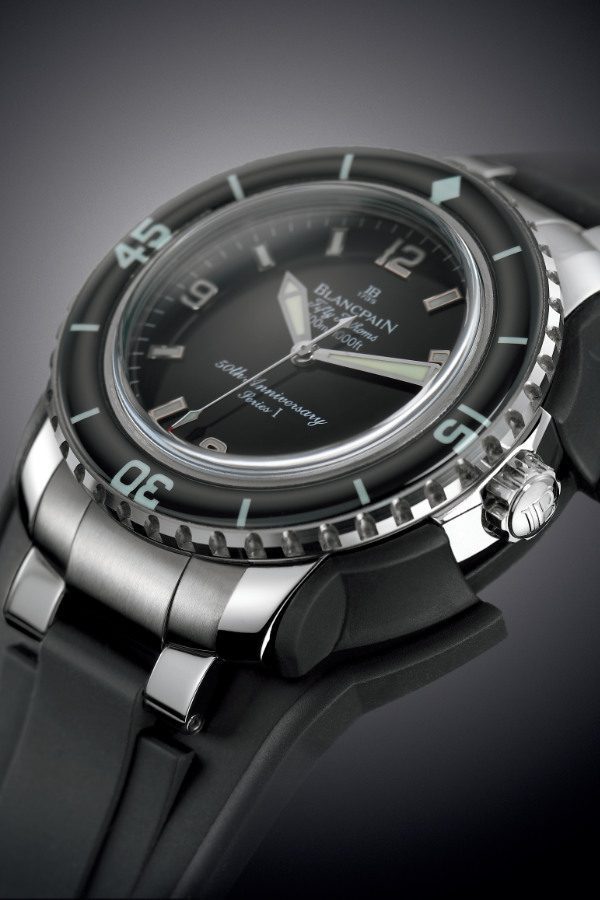
Between the 1980s and 2000s, the evolution of the Fifty Fathoms stagnated until Marc A. Hayek took the reins at Blancpain. Like Fiechter decades earlier, Hayek is a passionate diver.
When he discovered the vintage Fifty Fathoms watches housed in the Blancpain archives, Hayek was immediately captivated by Fiechter's creations and vowed to breathe new life into this history and tradition.
As a statement of both progress and continuity, the Fifty Fathoms that commemorated the watch's 50th anniversary in 2003 featured the same oversized luminescent dial, numerals, and indexes as the original 1953 design, symbolizing the adventurous spirit of the era.
Although the watch case was again made of stainless steel, the 2003 version, which was screwed down and had a screw-down crown and thick sapphire crystal, was more water-resistant, up to 300 meters, the equivalent of about 165 fathoms .
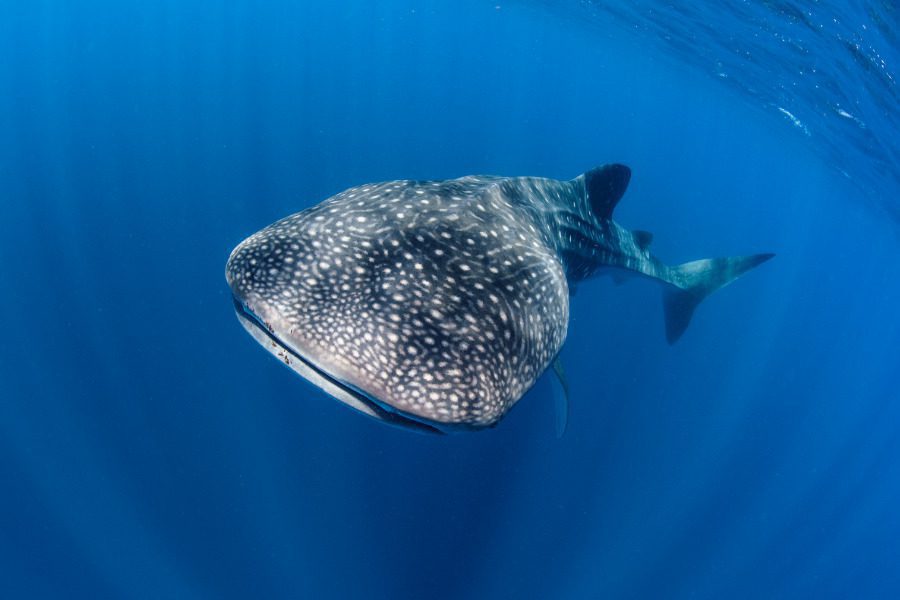
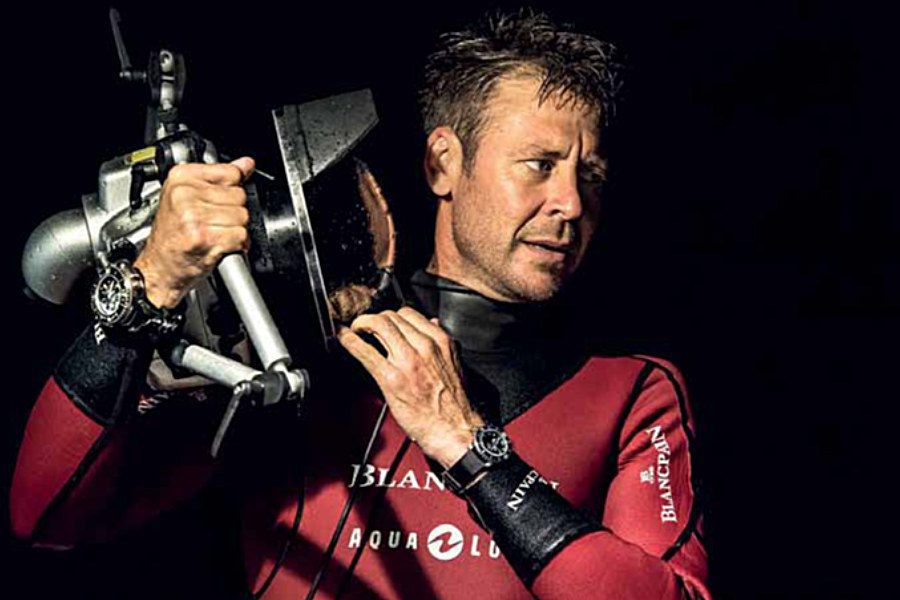
On the occasion of the unveiling of the contemporary Fifty Fathoms, Blancpain unveiled its first ocean preservation initiative, the Whale Shark Project, which would build on the Fifty Fathoms' contribution to the discovery of the oceanic world. The purpose of this initiative, which Blancpain launched jointly with the Shark Trust and PADI's Project AWARE, was to unite the diving community worldwide, encouraging them to participate in whale shark tracking to create a comprehensive database that would help identify potential protection needs.
The Fifty Fathoms was the catalyst for Blancpain's commitment to ocean preservation. In addition to playing a fundamental role in the development of diving and the discovery of the ocean world, it has allowed Blancpain to forge very close ties with the marine community, which have grown steadily stronger over the past 70 years. Among the Blancpain Ocean Commitment initiatives is the brand's collaboration with French diver, underwater photographer, and biologist Laurent Ballesta. Blancpain has supported his Gombessa expeditions since the first edition in 2013.
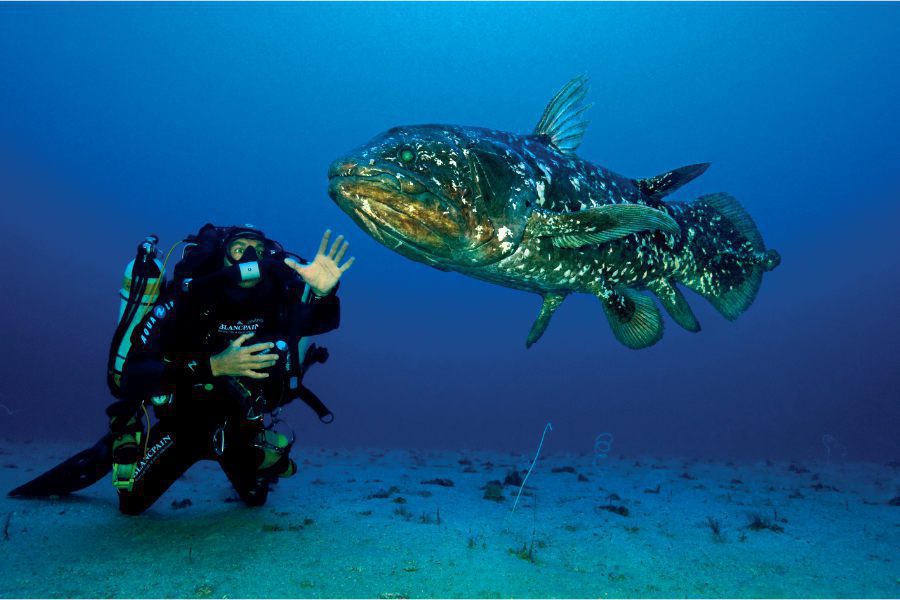
Laurent Ballesta's Gombessa project focuses on the study of some of the rarest and most difficult-to-observe marine creatures and phenomena. Ballesta and his team use electronically controlled closed-circuit mixed-gas respirators that allow them to descend to extreme depths to collect unique scientific data and take rare photographs and videos. Their work always presents a triple technical, scientific, and artistic challenge.
To date, six major Gombessa expeditions—and many other underwater missions—have been carried out, all accompanied by Blancpain. The first took place in the Indian Ocean in 2013 in search of the coelacanth, a prehistoric fish thought to have been extinct for 70 million years. Characterized by its lobed fins and "primitive lungs," the coelacanth attests to the process of terrestrial colonization that occurred 370 million years ago and is living proof of the common origin of all four-limbed terrestrial animals. As a very rare fish that live more than 120 meters underwater, only a few direct sightings had been reported until Laurent Ballesta traveled to South Africa accompanied by specially trained divers and researchers to conduct, for the first time, exhaustive scientific observations and experiments in close contact with a live coelacanth. And that's how Ballesta's project took the name Gombessa, as the coelacanth is known locally.
About Fifty Fathoms

First introduced in 1953, the Fifty Fathoms was the first modern diver's watch. Created by a diver to specifically meet the needs of underwater exploration, it was chosen as a professional timekeeping instrument by diving pioneers and elite marine corps around the world. Featuring exceptional water resistance, a robust double-sealed crown, a self-winding movement, a dark dial with contrasting luminescent markers, a unidirectional rotating bezel, and an anti-magnetic protection system, the Fifty Fathoms has become an indispensable instrument for divers during their underwater missions.
Thanks to these key characteristics, which define the identity of this type of watch and on which the entire watchmaking industry continues to be based, the Fifty Fathoms established itself as the archetypal diving watch. Bearing witness to the past while resolutely looking to the future, contemporary Fifty Fathoms models are equipped with modern movements renowned for their robustness and reliability. They incorporate numerous technical innovations resulting from Blancpain's extensive experience in diving, which has led it to fully understand its risks and unavoidable needs.
The Fifty Fathoms has played a pivotal role in the development of diving and the discovery of the ocean world. It has also allowed Blancpain to establish very close ties with the marine community, which have grown steadily stronger over the past 70 years. The Fifty Fathoms is the catalyst for Blancpain's commitment to ocean preservation.







